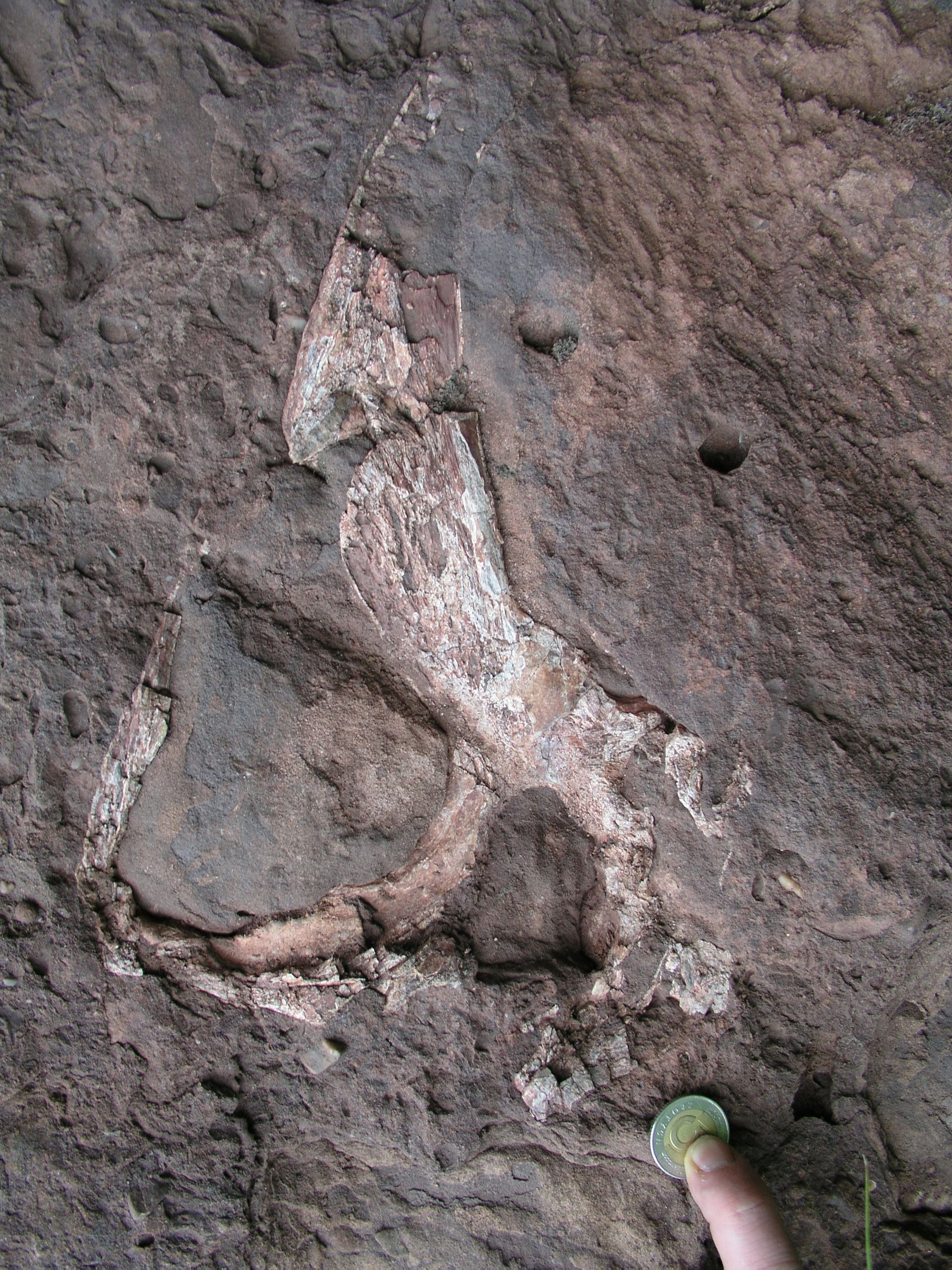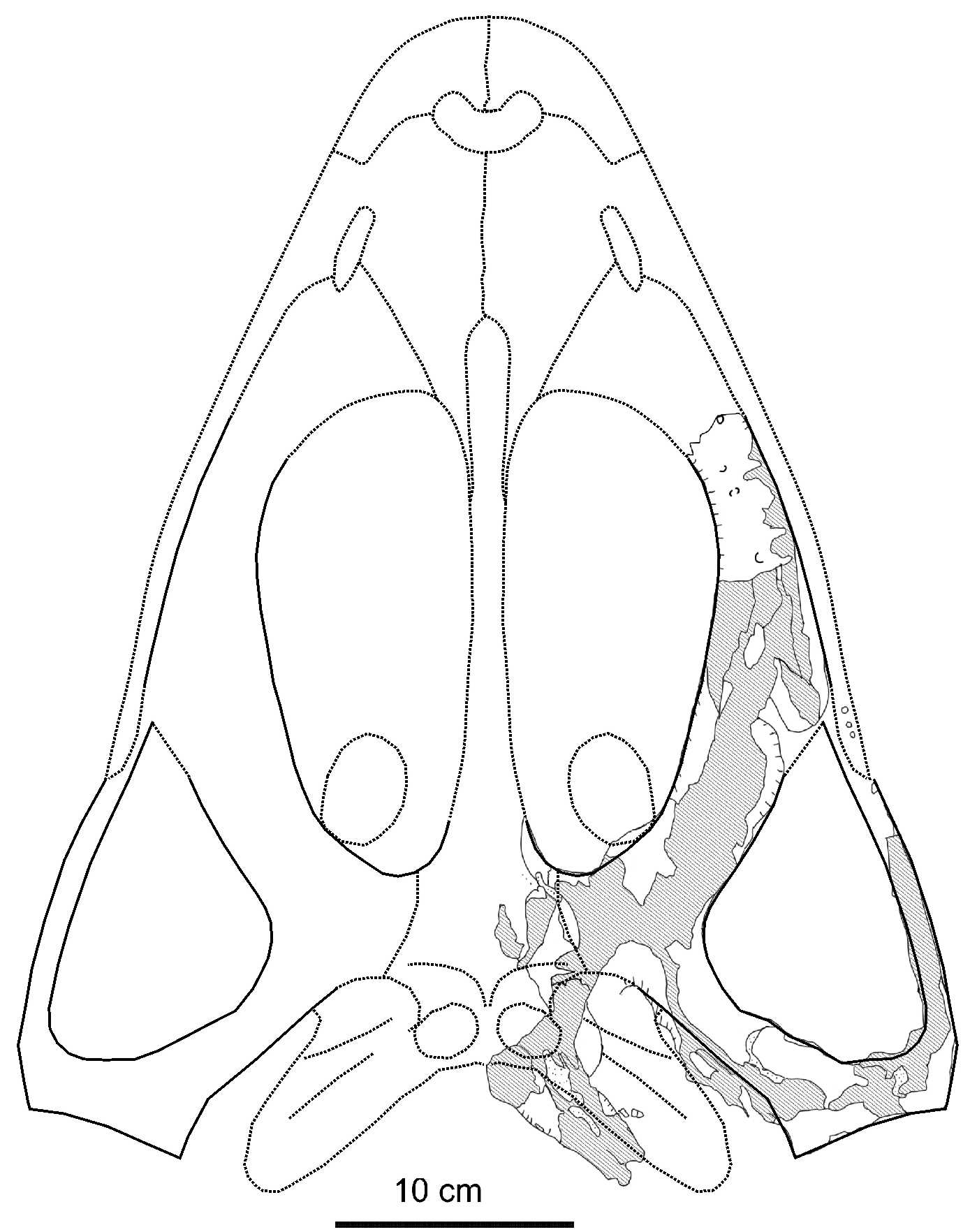Parotosuchus ptaszynski Sulej & Niedźwiedzki, 2013
Sugerowana cytacja: Sulej T. 2014. Parotosuchus ptaszynski Sulej & Niedźwiedzki 2013. Ikonoteka (http://ikonoteka.paleo.pan.pl/xwiki/bin/view/Species/Parotosuchus+ptaszynski)
Diagnoza Parotosuchus with the following combination of character states: torus arcuatus has more vertical position than the common condition in other parotosuchids. The dorsal surface of the retroarticular process is triangular, rather than roughly rectangular as in P. haughtoni and P. orenburgensis. The base of the hamate process is longer anteroposteriorly than in P. haughtoni and P. orenburgensis. The quadrate ramus of the pterygoid is shorter in length (= jaw articulation positioned more anteriorly) than in P. helgolandicus, P. nasutus, P. haughtoni, and longer than in P. orenburgensis. The lateral edge of the skull is more triangular in shape than in P. orientalis and P. nasutus. Porównanie Information from the age and skull morphology of the European Parotosuchus species known from the skull suggests some aspects of the evolution of this genus. The ratio of length to width of the temporal fenestra is: P. helgolandicus, 1.76; P. ptaszynskii, 1.62; P. orenburgensis, 1.54 (Fig. 8). It seems that P. ptaszynskii is intermediate in age and morphology between P. helgolandicus and P. orenburgensis. The relationships of P. nasutus are unknown. Autekologia Full aquatic predator, prey: fishes Występowanie geograficzne Poland Zasięg czasowy Late Olenekian, early Spathian Materiały muzealne Fragment of the palate in the block of sandstone, posterior part of mandible. Literatura Sulej, T. and Niedźwiedzki, G. 2013. A new large capitosaurid temnospondyl amphibian from the Early Triassic of Poland. Acta Palaeontologica Polonica 58 (1): 65–75. |
|


